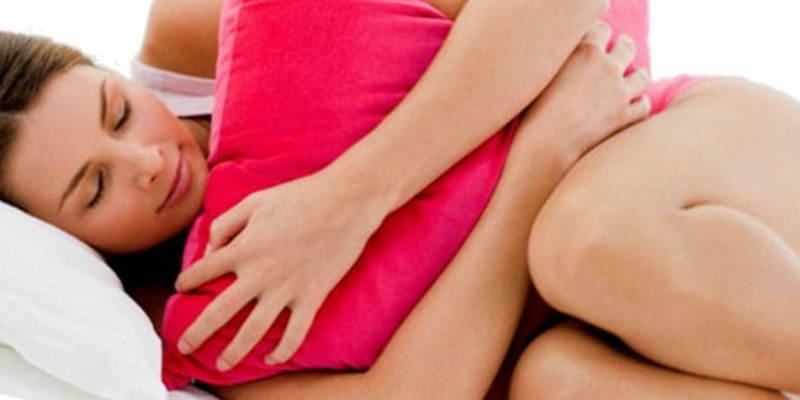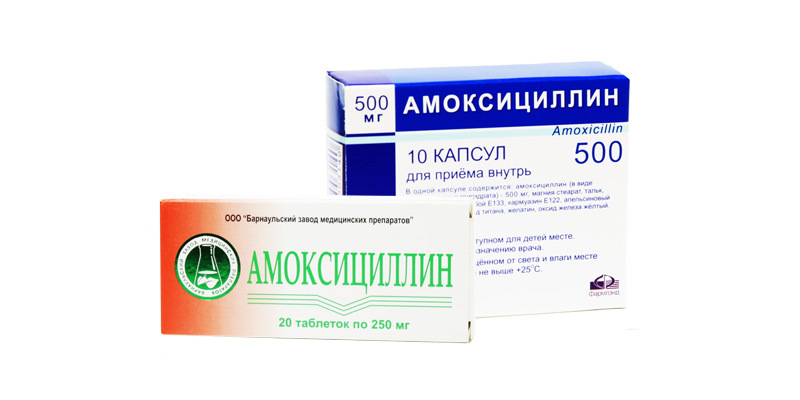
Contents of the page
- 1 Violation of the hormonal background in women - the causes of failures
- 2 How women's hormonal disorders are manifested
- 3 Hormonal pathologies in girls and adolescents
- 4 Basic signs of
- 5 Postabortion disorders
- 6 Postpartum hormonal failure
- 7 Hormonal disorders in climacteric period
- 8Normalization of the female hormonal background
The proper functioning of the female endocrine system depends on the state of health, well-being and mood. Violation of the hormonal background in women affects not only the reproductive functions, but also the entire body, from deterioration of appearance to serious sexual and extragenital diseases.
Breaking the hormonal background in women - the causes of failures
In the human body, hormones regulate many physiological processes. On their balance, growth and development, physical and intellectual abilities, emotional sphere, sexual activity depend. Representatives of the weak half of humanity, in addition to changing the hormonal background throughout life, feel the monthly fluctuations.
With the onset of maturation and until the end of the reproductive period, the female body is subordinated to the menstrual cycle, regularity and continuity of which provides the main function - procreation. Imbalance of sex steroids, as well as hormones of the pituitary gland, thyroid gland lead to malfunction in the work of many organs and systems.
What are the causes of hormonal disorders in women? The endocrine system is based on the interaction of the brain center of neuroendocrine regulation( the hypothalamus and pituitary gland) and the peripheral glands. All hormonal failures are conditionally divided into 2 large groups: due to violations of central regulation and caused by abnormalities of endocrine organs.
- Dysfunction of the hypothalamic-pituitary system can be a consequence of organic damage( trauma, infectious disease, tumor) or negative factor of external and internal environment( exhaustion, chronic fatigue).
- Insufficiency of peripheral endocrine glands can be caused by inflammation, trauma, congenital maldevelopment, concomitant diseases.

Predisposing factors in the development of hormonal disorders in women are:
- common endocrine diseases( diabetes, obesity, hypothyroidism);
- heredity( determines the severity of manifestation of PMS, menopausal symptoms);
- periods of hormonal changes in the body( puberty, childbirth, menopause, artificial termination of pregnancy);
- eating disorders( anorexia, bulimia, hungry diets);
- inflammation of the female genital organs;
- congenital pathology.
How women's hormonal disorders manifest themselves

Symptoms of hormonal imbalance in women depend on the cause and nature of the disease: which endocrine glands are failing, the level and ratio of which hormones go beyond the norm, there is a deficit or excess. There are common manifestations that make it possible to suspect a woman of problems with the hormonal sphere:
- On the part of the reproductive system: malfunctions of the menstrual cycle, difficulty in conceiving, miscarriage, decreased libido, anorgasmia, signs of masculinization( excessive facial and body hair, obesity in the male type,condition of the skin and hair).
- From the side of the central nervous system: emotional instability, irritability, depression, drowsiness, decreased memory and intelligence.
- On the part of metabolic processes: body weight increase, osteoporosis.
All these symptoms are reversible if the imbalance is detected and corrected in a timely manner. However, long-term persistent abnormalities lead to serious consequences, many of which are difficult and sometimes impossible to cure:
- infertility;
- premature extinction of sexual functions;
- obesity;
- metabolic syndrome;
- non-insulin dependent diabetes mellitus;
- atherosclerosis with a corresponding risk of stroke and heart attack;
- systemic osteoporosis, complicated by multiple fractures;
- hormone-dependent tumors.
Hormonal disorders in women of reproductive age differ from the problems that arise in maturing girls and ladies during menopause.
Hormonal pathologies in girls and adolescents

The first endocrine disorders in girls are associated with the process of puberty. Normally it occurs in the period from 7 to 8 to 17 - 18 years and is accompanied by the development of secondary sexual characteristics, the formation of a feminine figure, menarche, the formation of a stable cycle, the ability to conceive and bear a child. However, this critical period does not always go smoothly. Among the most common problems:
- Premature puberty. It happens to be genetically conditioned when a girl grows up physically early, like all women in her family - this is considered a variant of the norm. Another case is a pathological premature ripening. If a girl under 7 years old suddenly starts to grow rapidly and develop physiologically, right up to the first months in 4 to 5 years, it can talk about such serious pathologies as a pituitary / hypothalamus tumor or an ovarian tumor producing female sex hormones.
- The delay in sexual development is also institutional: a girl is formed much later than her peers, but at the same time has a perfectly healthy reproductive system. If the heredity of a girl is not predisposed to late maturation, it is worth examining for abnormalities of the pituitary gland and genetic abnormalities. A developmental delay may have a more common cause - depletion, caused by anorexia, severe diets.
- Shattered verification. This is a violation of sexual development, characterized by separate signs of masculinization in girls, for example, by type-one haemorrhage. This pathology develops mainly in 11 - 13 years. The girl comes on time menarche, normally formed secondary sexual characteristics. Then there are sharp changes in appearance: high growth, obesity, severe acne, cross crimson stretch marks on the body. As a rule, these problems begin after a viral infection, tonsillitis, trauma, stress, and are defined by doctors as the hypothalamic syndrome of puberty. This pathology does not have an exactly established cause, but it is uniquely associated with disorders in the autonomic nervous system. Girls with GGPSA suffer from signs of dystonia: galloping pressure, headaches, increased fatigue. GMPCS should be differentiated from the genetically determined pathology of the ovaries and adrenal glands.
- Juvenile uterine bleeding( JMC) - a disorder of the menstrual cycle in girls, associated with a malfunction in the chain "hypothalamus - pituitary - ovaries."The probable cause of this phenomenon is mental and physical overstrain( intensive training, education, lack of vitamins, transferred infection).Approximately 20% of girls can not cope with excessively high load, and their hormonal background fails. First there is a delay of the monthly - from a couple of weeks to several months, then begins profuse and prolonged bleeding. Against the background of JMK, anemia develops, disorders in the coagulation mechanism of blood.
Female hormonal disorders in reproductive age

Signs of hormonal disorders in women are not always obvious. Sometimes the only problem that worries a patient is long( more than a year) and unsuccessful attempts to become pregnant. With a gynecological examination, a woman is found to have malfunctioning ovaries and other endocrine glands, which partially or completely blocks ovulation. In this case, the cycle itself is completely stable, external manifestations of pathology may be absent.
The main signs of
However, asymptomatic hormonal failure is a rare phenomenon, more often a woman has one or more symptoms:
- Amenorrhea is the absence of menstruation outside the period of pregnancy and lactation of the central, adrenal or ovarian origin. Amenorrhea occurs against the backdrop of stress, physical exhaustion, starvation, severe illness or direct damage to the hypothalamic-pituitary center( craniocerebral trauma, swelling, infection).Excessive secretion of adrenal steroids - the second cause of amenorrhea - indicates the presence of Isenko-Cushing syndrome - severe endocrine pathology. Women with such a disease have obesity of the upper body, weak musculature of hands, round red face, male-type hair, stretch marks, fragility of bones. The third variant of amenorrhea development is ovarian dysfunction( polycystic ovary syndrome and other diseases).Ovaries are often reflected in appearance: overweight, oily skin, thin sebaceous hair, hair on the face, abdomen, inner sides of the thighs.
- Dysfunctional uterine bleeding is manifested by a violation of the duration of the cycle and the intensity of bleeding. Monthly lose their normal periodicity, they come chaotically after long delays, they are distinguished by long duration and abundance. The cycle can be both anovulatory( without egg) and ovulatory. The causes of such disruptions lie in the transferred infectious diseases, severe stresses, exhaustion, abortions. In addition to infertility, dysfunctional bleeding entails the pathology of the endometrium, including malignant ones.
- Premenstrual syndrome( PMS) - contrary to stereotypes is not the norm. Malaise and emotional instability, occurring a few days before the onset of menstruation, suggest a disorder in the regulative function of the hypothalamus. The exact causes of this condition are not fully known, but its relationship with hereditary factors, abortions, lesions of the central nervous system, a sedentary lifestyle, and malnutrition has been proved. Symptoms of PMS appear cyclically and end with menstruation. The most common signs of the syndrome are psychoemotional: irritability, depression, insomnia, fatigue. A woman can be tormented by migraines, nausea, puffiness, bloating, discomfort in the mammary glands. In more severe cases, there are symptoms of vegetative-vascular dystonia: pressure jumps, palpitations, sweating, fear of death, and chest pain.
Post-abortive disorders of
Hormonal failure is often paid by women for the artificial termination of pregnancy. Abortion is not only a psychological and physical trauma, but also a sharp breakdown of neuroendocrine processes occurring in the body after conception. Especially dangerous are the consequences of the first abortion, regardless of the period at which the intervention occurred.
Normally, the hormonal background should be restored on its own within a month after the operation. With medical abortion, an endocrine correction is required, since the drugs that cause interruption in themselves violate the balance of female hormones.
If after a month the cycle did not return to normal, weight increased, stretch marks appeared, emotional instability, migraine pains, pressure - there is every reason to suspect that abortion did not pass without a trace for the hormonal system.
Postpartum hormonal failure

Physiological alteration of the body after delivery takes place not one month. Absence of menstruation, unstable cycle, excess weight during this period are not signs of hormonal unhappiness. Over time, everything should return to normal. Provided sufficient mobility and a balanced diet, even breast-feeding does not prevent the restoration of the pre-pregnancy form.
However, if the lactation has already been completed, and the woman has problems with weight, menstruation, there are spotting discharges outside menstruation, hair on the body and face grows, symptoms of neurosis develop - you need to turn to gynecologists.
Hormonal failure in the postpartum period can be triggered by overwork, depression, complications, somatic diseases, infections.
Hormonal disorders in the climacteric

Hormonal disorders in women after 40 years are mainly associated with the gradual attenuation of the childbearing function. The physiological ability to become a mother can last up to 45 - 50 years, but the chances of getting pregnant decrease every year. Hormonal alteration of the body is accompanied by an irregular cycle and climacteric syndrome.
After 45 years, the female body is preparing to stop menstruation: the ovaries reduce the production of estrogen, the main hormone responsible for the beauty and youth of the beautiful half of humanity. The woman becomes irritable, quickly gets tired, feels unwell - the so-called hot flashes. Sensations of fever, sweating, palpitations come onset and bring physical and psychological discomfort. However, with the onset of menopause, these symptoms decrease.
The natural extinction of estrogen production and the associated deterioration of well-being are not pathologies. However, in some women, menopause occurs severely, with severe hormonal disorders: obesity, development of glucose tolerance, diabetes mellitus, systemic osteoporosis, failure of lipid metabolism.
Pathological menopause often has a hereditary nature, but its contribution to its occurrence is made by an unhealthy lifestyle:
- bad habits;
- inactivity;
- improper power;
- stress.
Women with complicated gynecological and obstetric anamnesis are also at risk. If the patient has a reproductive age, observed violations of the menstrual cycle, dysfunctional bleeding, PMS, toxicosis, the chances that the climacterium will pass easily, are minimal. Severe births, miscarriages, abortions, chronic inflammation of the female organs, too early and too late maturation, as well as lack of delivery and inadequate sexual life can significantly complicate menopausal manifestations. Menopause is difficult for women with neurotic and mental disorders.
Normalization of female hormonal background

Treatment of hormonal disorders in women begins with a comprehensive examination:
- collection of anamnesis;
- gynecological examination;
- ultrasound of the organs of the small pelvis, liver, adrenal glands;
- blood test for hormones( estrogens, progesterone, testosterone, prolactin, FSH, LH);
- endocrinologist consultation;
- thyroid ultrasound, blood test for T3, T4, TTG;
- analysis for blood sugar, a test for glucose tolerance;
- blood test for lipoproteins;
- X-ray examination( hysteroscopy, a picture of the Turkish saddle);
- laparoscopy.
First of all, ovarian, adrenal and brain tumors that cause endocrine disorders are excluded. Their treatment involves surgical intervention and serious therapeutic measures( radiation, hormonal, chemotherapy).
In other cases, the treatment is to eliminate the factors that provoked the malfunction, and the correction of the hormonal background. In women, therapy is performed by a gynecologist-endocrinologist. It is aimed at normalizing menstrual and reproductive functions, reducing body weight, alleviating unpleasant symptoms.
Changing diet and lifestyle
 Photo: kefir with berries
Photo: kefir with berries The nature of nutrition and lifestyle significantly affect the hormonal background. Diet and physical activity have a beneficial effect on the female body: maintain a normal body weight, activate metabolism, promote good mood and well-being. Sometimes it is enough to establish a diet, exercise regularly, give up bad habits and sleep out so that the hormonal balance begins to recover.
It is necessary to exclude from the menu fatty, floury, fried dishes, carbohydrates with a high glycemic index, alcohol. When estrogen deficiency is recommended, it is recommended to consume foods containing the main "reproductive" vitamins A and E, as well as phytohormones:
- fish and seafood;
- soy;
- berries;
- green and orange vegetables;
- vegetable oils;
- nuts;Sunflower seeds sunflower seeds
- ;
- grenades.
Wild yam, dried fruits, persimmons, apples are useful for replenishment of progesterone deficiency.
Supplements

With hormonal imbalance, women are prescribed vitamin-mineral preparations as sources:
- calcium, warning of osteoporosis;
- of vitamin A, which is involved in the synthesis of sex steroids and controls the level of progesterone;
- of vitamin C, regulating the production of adrenal hormones and the work of the nervous system;
- tocopherol, stimulating thyroid function;
- vitamins B-group, magnesium;
- of folic acid.
It is recommended to take homeopathic remedies - Cyclodinone, Mastodinone, Climadinone - for 3 months. These supplements gently and without harm to health regulate the menstrual cycle, reduce the symptoms of PMS, menopause, mastopathy.
Hormone therapy
Treatment of female disorders with hormonal drugs is long and complex. It is based on the hormones in the body of a particular patient and requires an individual approach. Most often for therapeutic purposes, use oral contraceptives with different dosages and the ratio of synthetic estrogens and progestogens. Inadequate therapy can lead to aggravation of pathology, and speech about the independent use of COC in women with impaired endocrine status can not go.
In case of complex disorders, doctors use non-contraceptive, and therapeutic hormonal drugs. The choice of tablets, treatment regimen and duration of the course are exclusively in the competence of an experienced gynecologist-endocrinologist:
- Cyclic replacement therapy with estrogen preparations for hypoplasia of the reproductive organs is used to shape the cycle, the development of the ovaries and the uterus.
- Stimulating therapy with large doses of estrogen and progesterone is aimed at creating an ovulatory cycle, restoring the endocrine functions of the ovaries and the hypothalamus.
- Gonadotropin treatment is used to stimulate the growth of follicles. Injections of hormones FSH and hCG are practiced.
- The introduction of shock doses of estrogen and progesterone according to a specific scheme helps to adjust the cycle when individual phases fail.
Folk remedies for normalizing the hormonal background

Any impact on the hormonal background should be carried out under medical supervision, even if it is folk recipes. With the permission of the doctor, you can use funds that compensate for the deficiency of female hormones due to phytoestrogens: decoctions of clover, nettle, calendula.
Menopausal women are helped to cope with unpleasant symptoms of mint, sage, St. John's wort, lemon balm, lily of the valley, crow.
A few more recipes:
- Infusion of vetex sacred. At night brew grass in a thermos in the ratio of 1 tbsp.l.raw materials for 2 cups of boiling water. The finished product is drunk during the day to regulate the cycle and stimulate ovulation.
- Gooseberry tea. In a glass of hot water, brew 1 tsp.grass, drink morning and evening, starting a week before the menstruation, finish on the first day of bleeding. Helps reduce soreness and profuse menstruation.
- Flaxseed oil. Serving them with salads or drinking in a pure form for 2 tbsp.l.a day you can make up for the lack of estrogen in the female body.



